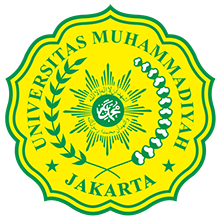Weather Forcast Optimization Using Learning Vector Quantization Methods with Genetic Algorithms
Abstract
Weather forecasting is one of the important factors in daily life, as it can affect the activities carried out by the community. The study was conducted to optimize weather forecasts using artificial neural network methods. The artificial neural network used is a learning vector quantization (LVQ) methods and genetics algorithms (GA). BMKG weather data was originally modeled using the LVQ method, then also created the LVQ Method Optimization weather forecast model using GA. Data attributes consist of numeric and categoric. Numeric attributes as input parameters are: temperature, evaporation, sunlight, humidity and rainvol. While the categorical attributes are ourput from weather forecasts include: Cloudly (C), Partly Cloudly (PC), Sunny (S), Rain (R) and Cloudly rain (CR). Sample data used is 1096 data. Both models were tested so that they obtained 72% accuracy results for weather forecast models using the LVQ method and 73% of the weather forecast accuracy results that were optimized using GA. The results have not achieved the most optimal results because it turns out that citeko region weather data is not suitable for use in both methods. Because the data has an imbalance in the amount of data per class.
Keywords
Full Text:
PDFReferences
Gibbs. 1987. Pengertian Cuaca.
A. Kustiyo, A. Buono, N. Apriyanti. 2006. Optimasi Jaringan Syaraf Tiruan dengan Algoritma Genetika untuk Peramalan Curah Hujan. Jurnaillmiah IImu Komputer. Edisi 6 Nol.4 No.1; 1-9.
K. Widyawati, B.D. Setiawan, P.P Adikara. T. 2018. Optimasi Vektor Bobot Learning Vector Quantization Menggunakan Algoritme Genetika untuk Penentuan Kualitas Susu Sapi. Jurnal Pengembangan Teknologi Informasi dan Ilmu Komputer. Vol. 2, No. 1, Januari 2018, hlm. 217-225.
O. Sen, S. Zhengxiang, W. Jianhua, C. & Degui. 2002. Application of LVQ Neural Networks Combined with Genetic Algorithm in Power Quality Signals Classification, Shaanxi: School of Electrical Engineering.
S. Kusumadewi. 2004. Membangun Jaringan Syaraf Tiruan menggunakan Matlab dan Excell Link. Penerbit Graha Ilmu.
D. M. Wuryandari, I. Afrianto. 2012. Perbandingan Metode Jaringan Syaraf Tiruan Backpropagation Dan Learning Vector Quantization Pada Pengenalan Wajah.
R. Sulistiyorini, W. F. Mahmudy. 2015. Penerapan Algoritma Genetika Untuk Permasalahan Optimasi Distribusi Barang Dua Tahap, Malang: Doro Jurnal.
R. Arniantya, B.D. Setiawan, P.P Adikara. T. 2018. Optimasi Vektor Bobot Pada Learning Vector Quantization Menggunakan Algoritme Genetika Untuk Identifikasi Jenis Attention Deficit Hyperactivity Disorder Pada Anak. Jurnal Pengembangan Teknologi Informasi dan Ilmu Komputer. Vol. 2, No.2, Februari 2018, hlm. 679-687.
A. A. Dwi, C. Dewi, Indriati. 2019. Implementasi Algoritma Genetika untuk Optimasi LVQ pada Penentuan Kelayakan Kredit (Studi Kasus: Bank X). Jurnal Pengembangan Teknologi Informasi dan Ilmu Komputer. Vol. 3, No. 1, Januari 2019, hlm. 1114-1119.
M. Hendry, R. M. Dayawati, A. T. Wibowo. 2009. Analisis dan Implementasi Optimasi Jaringan Saraf Tiruan dengan Menggunakan Algoritma Genetika untuk Pendiagnosaan Penyakit Stroke (Studi Kasus : RS. Dr. M. Djamil Padang Sumbar).
J. Han, M. Kamber, J. Pei. 2012. Data Mining: Concept and Techniques. Ed ke-3. Amsterdam (NL): Elsevier, Morgan Kaufmann.
B. Kusumoputro. 2004. Pengembangan Sistem Pengenal Wajah secara 3 Dimensi menggunakan Hemisphere Structure of Neural Networks dan Optimasi Struktur menggunakan Algoritma Genetika. Makalah SNIKTI V. Fakultas lImu Komputer, VI, Depok.
DOI: https://doi.org/10.24853/jasat.3.2.45-50
Refbacks
- There are currently no refbacks.
Copyright of Journal of Applied Sciences and Advanced Technology (JASAT)


![]()
This work is licensed under a Creative Commons Attribution-NonCommercial 4.0 International License















_2.png)


1.png)

2.png)



